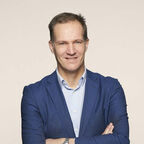"Everyone wants to change, but no one wants change," it is an often-heard complaint of the change manager. "Sustainable change, therefore, can never be the mission of one person within an organization," stated Daan Sorgeloos, who conducted extensive research on the ideal change agent team and the dimensions of the change agent model.
"Sustainable change can never be the mission of one person within an organization - Daan Sorgeloos"
During an organizational change, we recognize three action groups: the change strategists, the change agents and the change receivers. The key people are obviously the change agents, because they must translate the change strategists' strategic decisions into specific interventions. At the same time, they must create support for these interventions to make sure that there is as little resistance as possible from the change receivers.





